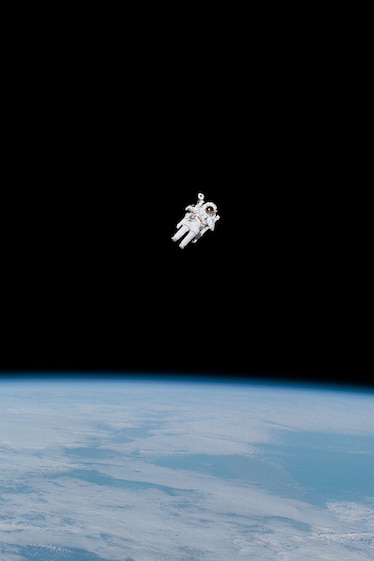Once upon a time, before humans understood what lay above the clouds, the realm of sky and stars was inhabited only by gods and explained only by myths and fables. But a series of discoveries, intermingled with fits and starts, wrong ways and dead ends, ultimately shattered those primal beliefs, empowering humankind with the knowledge to unveil strange and humbling truths.
The odyssey of cosmic discovery had begun—and it has continued on ever since. Slowly but surely, a new universe emerged—one roiling with molecules, lurking with monstrous black holes, snaking with voids and galaxies of every size and shape, and hinting at untold mysteries.
What empowered humans to escape our home, physically and intellectually, and soar into the unknown? What insights, what courage, what technological failures and successes carried us to the knowledge we have today? And what mind-blowing realizations at the edge of our understanding provide glimpses of a vast cosmos yet to be explored?
Vastness, emptiness, darkness, coldness: concepts ill fathomed by a comfortably warm-bodied, recently evolved, carbonaceous creature in a suburban solar neighborhood of the Milky Way galaxy. If you did not already know that Earth orbits the sun, and not the other way around, you would have a hard time discovering that truth for yourself. If you did not know our solar system includes eight planets, hundreds of thousands of asteroids, and millions of comets, you might understandably assume that only Earth and the five planets visible to the unaided eye make up our little corner of the cosmos. To reach these milestones of knowledge, we had to leave the nest.
The force that keeps Earth whole, that tethers our moon to Earth and Earth to our sun, has also kept humans stuck beneath the clouds for nearly all our existence. We cannot easily escape Earth’s gravity, which may be why the Wright brothers’ first powered flight, in 1903, and the Apollo 11 moon landing, in 1969, appear near the top of everyone’s list of the greatest human achievements. Since then, thousands of satellites, hundreds of space probes, rovers, and even a helicopter have launched from Earth, turning our solar system into an explorer’s backyard.
And that backyard continues to expand. In 2012 the Voyager 1 space probe went interstellar, escaping our solar system entirely—but not before transforming the mysterious planets and their moons into worlds of wonder. Voyager’s final mission is not done: The tiny craft carries a golden record, an audio recording of songs and sounds of Earth and its species, bidding hello to anyone or anything that might intercept our greeting. Voyager carries forward the unending quest passed down from the first humans who wondered what more awaits our outstretched hands and upturned eyes.
Beginning in 2022, the James Webb Space Telescope extends the odyssey ever outward, sending us images of the most ancient light ever seen and reminding us just how expansive our universe really is. Webb’s First Deep Field image unveiled thousands of faint and distant galaxies, including several that formed 13.7 billion years ago, bringing us as close to the big bang as we’ve ever been able to reach.
Try to imagine explaining that composite image to Newton or Galileo, whose radical new understanding of the universe upended all Christendom and shook the worlds of knowledge and belief. Imagine telling them that we are but one of trillions of planets in a universe with no tangible end. Imagine sharing with them how quantum physics and general relativity hint that not one, but countless, universes may exist beyond our own.
Welcome to the cosmic odyssey—a thrilling, humbling, and thoroughly entertaining journey of discovery through space-time to infinity and beyond.
This story appears in the October 2023 issue of National Geographic magazine.
